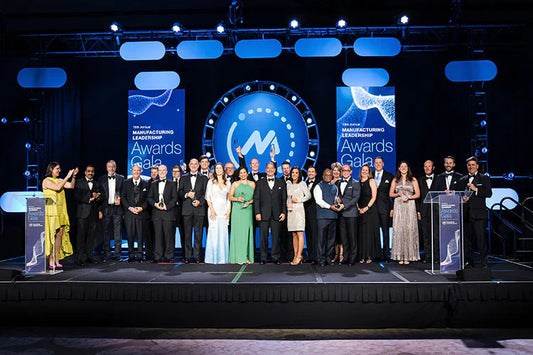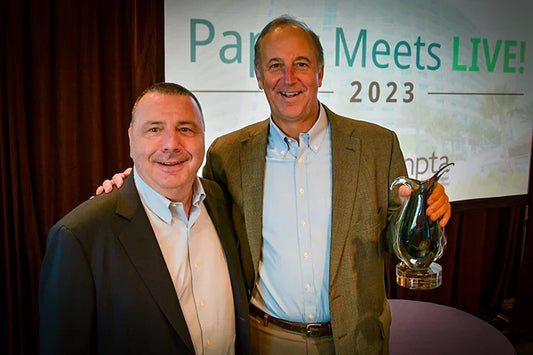How Is Paper Made?

Making paper is a process. But making paper right? That’s a choice.
The paper industry often gets a bad rap. Many people think papermaking harms the environment. In reality, when it's sourced and manufactured sustainably, paper can actually benefit the environment.
We strive to keep forestland forested.
So, how do we do that?
We begin in a working forest.
What is A Working Forest?
Forests cover over 30% of the earth’s surface—almost 10 billion acres.
Almost two-thirds are working forests, which are actively managed to provide multiple benefits, such as wood fiber, recreation, wildlife, aesthetics, clean water, and environmental restoration. Less than 1% of the wood from these forests is harvested each year.
The demand for wood for paper products has not only protected working forests but also contributed to an increase in forest cover in the developed world. There are more trees and forests today in the U.S. than there were 60 years ago.
Owners of working forests plant even more trees than they harvest. In fact, over 1.7 million trees are planted in working forests every single day!
Why Does Forest Management Matter?
90% of forestland in the U.S. is owned not by corporations, but by private forestland owners, which are typically individual families.
For generations, these 'tree farmers' have managed the land to ensure the long-term health of the forest. By sustainably managing their forests, they can earn money from their land while making sure that their forests can be passed down to the next generation.
The Hammermill brand works to ensure that the forests we source from practice responsible forest management, using techniques that are friendly to the environment and forest ecosystem.
Now that you know how making paper the right way starts, let’s look at the papermaking process in all of its glorious detail.
Choosing sustainably sourced Hammermill® paper is an easy way for businesses—both large and small—to demonstrate a commitment to CSR.
Your customers and consumers care about their communities and the environment. To support our local communities, Hammermill paper is produced here in the United States, and made with renewable resources from sustainably managed forests and/or recycled pulp.
Plus, unlike imported papers, the Hammermill brand helps to employ thousands of American workers in forests and mill towns across the country. In fact, each of our mill jobs supports 3.25 more jobs in supplier industries and local communities.
The Papermaking Process
Here’s a step-by-step breakdown of Hammermill’s papermaking process.
-
Landowners plant trees and manage the forests.
After trees are harvested from a working forest, they are sawed into logs between four and eight feet in length. - When the timing is right, the trees are sustainably harvested and the wood is delivered to the paper mill.
-
The bark (the outer skin of the tree) is removed.
At the mill, operators feed the wood into a rotating cylinder drum, also known as a de-barker. As the wood moves through the drum, the rotating action of the drum removes the bark.. The bark is then used for biofuel, a carbon neutral alternative to fossil fuels, so that no part of the tree is wasted. -
The wood is turned into tiny wood chips.
They are fed into a wood chipper, which chops the wood into into “chips” about one inch in length. Dividing the wood into one-inch chips makes it much easier to “cook.” -
The wood chips are boiled and dissolved into pulp—which can take up to eight hours.
Wood chips go into a machine called a digester, which is essentially a paper mill's version of a pressure cooker. The digester cooks the wood chips until they turn into cooked cellulose fiber—the main ingredient of paper (aka “pulp”)! -
The fiber goes through several washing and cleaning cycles to whiten and clean the pulp. Workers use additives to whiten the pulp and make it strong and clean.
But how is colored paper made? As fun as it would be, colored paper does not come from magical rainbow trees. To produce colored paper, workers add dye to the pulp. -
Water is squeezed out of the pulp by pressing it on a flat surface.
And at the mills we use, water is used up to 10 times before returning over 90% of it back to the environment. Large steam-heated drums then dry the pulp to create paper. -
The paper is rolled into one very long roll of paper.
Think extra-large CVS receipt, but even bigger. - The paper roll is then unrolled and cut into sheets.
-
Truck drivers take the paper to stores, offices, and schools across the U.S.
Making it easier than ever for people like you to capture your thoughts, share your ideas, and bring your digital world to life.
Our Holistic Approach To Sustainable Paper Making
By sourcing sustainable fiber, we create more forests and healthier ecosystems, ensuring a better future for future generations. But it’s about more than planting trees.
Through reduction projects and process improvements, we continue to reduce our energy use and emissions. We also reduce greenhouse gas emissions by fuel switching—replacing fossil fuels with renewable biomass.
Sylvamo, our parent company, fosters healthy, sustainable watersheds by continuously reducing water use per ton of paper produced and by continuously improving the quality of the water we return to the environment.
We Make Paper Right For Everyone
Throughout every step of our value chain, we contribute to and promote a circular economy that is restorative and regenerative by design. The way we make paper supports good jobs, helps our communities thrive, and provides essential products worldwide.
Your demand for paper, packaging, and other forest products provides an economic incentive for working forest owners to grow, harvest, and regenerate these forests for continuous, sustainable use—assuring that trees will continue to be regrown and that our precious forests will be preserved for the future.
Now you know how paper—the medium for how ideas are exchanged, innovations are made and creativity is explored—is made.
What will you do with it?


